Looking for accessible wilderness experiences where your vehicle opens doors to America’s most spectacular landscapes? You’ve found them here.
Car camping offers the perfect balance of adventure and convenience-allowing you to wake up in stunning locations without sacrificing the comfort and storage of your vehicle.
From the misty coastlines of the Pacific Northwest to the towering granite spires of Wyoming, the USA’s car camping destinations offer something for every type of outdoor enthusiast. Unlike traditional backpacking, car camping allows you to bring along creature comforts-proper sleeping gear, camp chairs, coolers full of fresh food, and all the equipment that transforms a night outdoors from mere survival into genuine recreation. Your vehicle becomes both transport and basecamp, offering shelter from unexpected weather and a secure place to store valuables whilst you explore.
This accessibility opens up American wilderness experiences to families with young children, older adventurers who might struggle with heavy packs, and anyone who simply prefers to enjoy nature without completely abandoning modern conveniences.
Olympic National Park, Washington: Where Three Ecosystems Collide In Spectacular Fashion
Few places on Earth compress such extraordinary diversity into a single national park. Within Olympic’s boundaries, you can experience temperate rainforest that rivals the Amazon, rugged Pacific coastline that feels like the edge of the world, and alpine meadows that bloom in brilliant succession throughout the summer months. It’s this remarkable variety-accessible via well-maintained roads-that makes Olympic a car camping destination unlike any other.
Olympic’s diverse ecosystems make it a car camping paradise, with paved roads connecting wildly different landscapes within hours of each other.

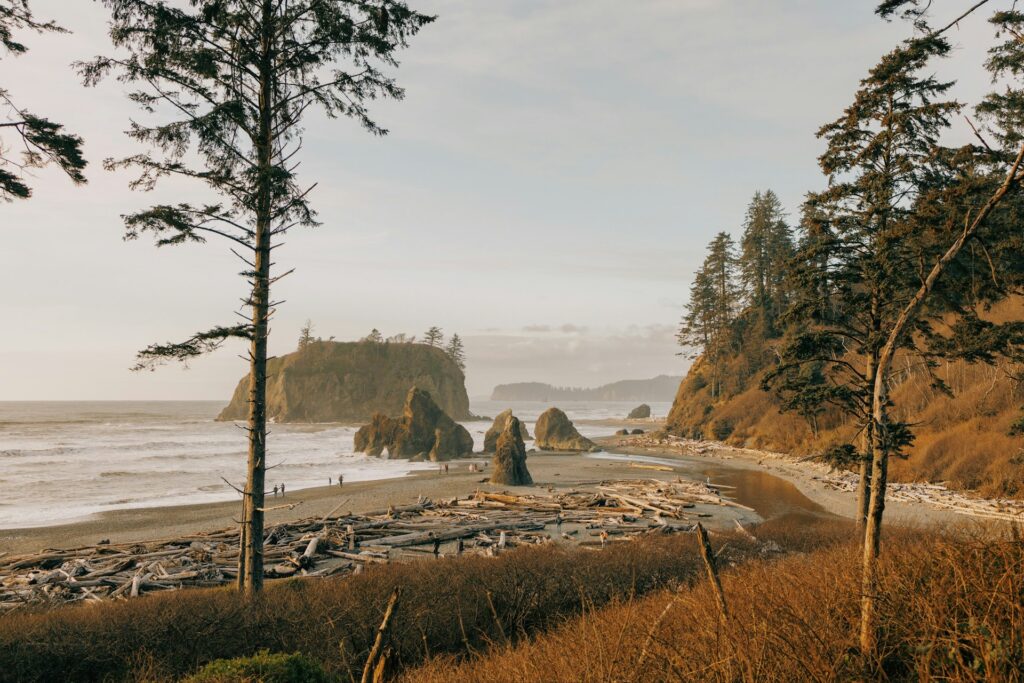
Kalaloch Campground sits directly on the Pacific coast, offering beachfront sites where you’ll fall asleep to crashing waves. Several sites provide excellent ocean views, though they tend to be windier than forest locations. The campground operates year-round with flush toilets and potable water, though summer reservations fill up months ahead. Beach walks reveal tide pools, sea stacks, and some of the Pacific Northwest’s most dramatic coastal scenery.
Heart O’ the Hills Campground provides access to the park’s temperate rainforest. Located at 1,800 feet elevation, it offers cooler temperatures and towering old-growth forests just 5 miles from Port Angeles. The Hurricane Ridge Road starts here, leading to alpine meadows and mountain views when weather permits.
Practical Tips: Summer temperatures rarely exceed 20°C, so you should pack layers and waterproof clothing regardless of when you visit. Coastal sites tend to be windier but generally warmer than the forest locations. Reservations open up to six months in advance through Recreation.gov, and summer dates fill quickly.
Sedona, Arizona: Desert Camping Amongst Nature’s Sculpture Gallery
Imagine waking up surrounded by towering sandstone monuments that seem to glow from within, their surfaces painted in every shade from pale gold to deep burgundy. Sedona’s red rock formations aren’t just geological features-they’re natural architecture on a scale that dwarfs human ambition, carved by millions of years of wind and water into shapes so striking they’ve become pilgrimage sites for photographers and spiritual seekers alike.
What makes this desert paradise even more appealing for car campers is the abundance of free dispersed camping options that place you right in the heart of this red rock theatre.
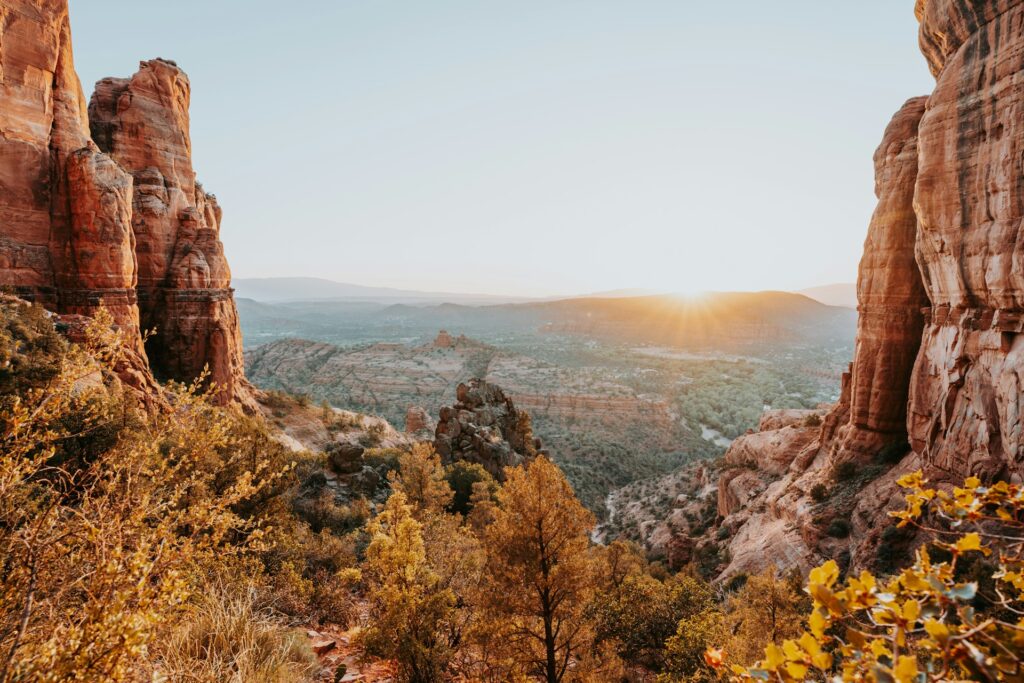
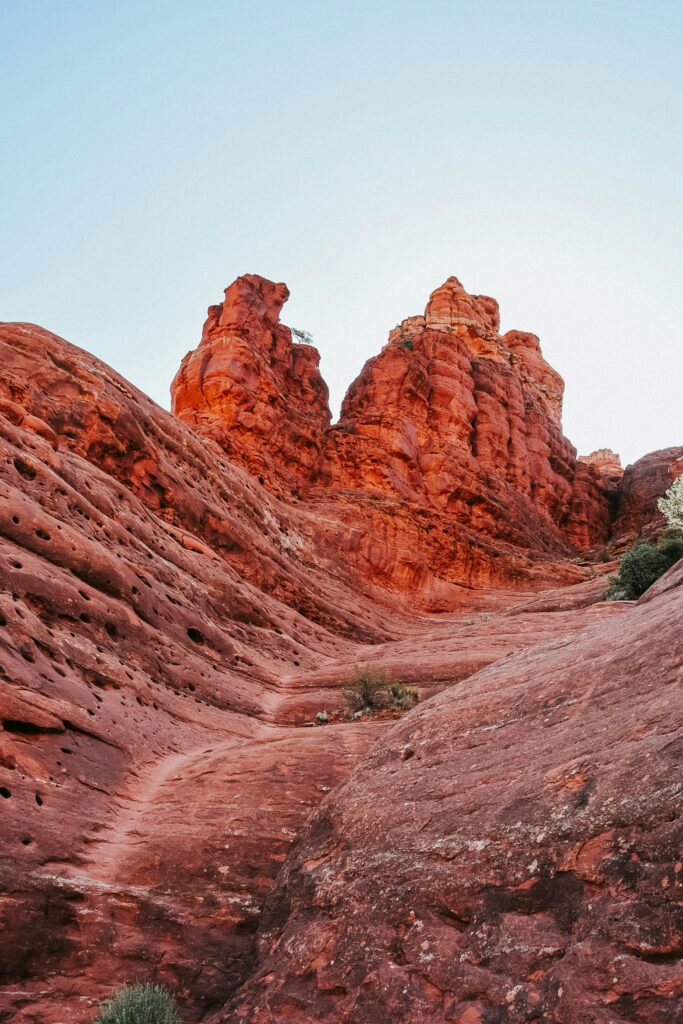
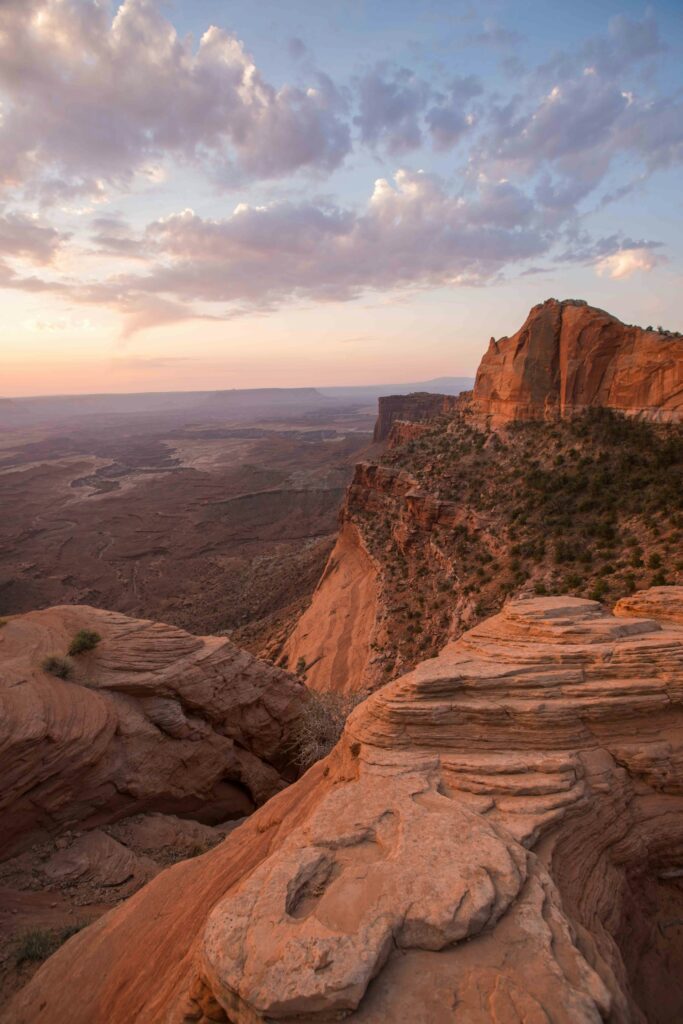


The Coconino National Forest allows free dispersed camping on most forest roads around Sedona. Popular spots include Forest Road 525 (Schnebly Hill Road) and areas off Highway 179 south of town. These sites offer panoramic red rock views without campground fees, though they lack amenities like water and restrooms.
For those preferring developed campgrounds, Dead Horse Ranch State Park in nearby Cottonwood provides full facilities with red rock views. Sites range from $25-50 per night depending on whether they include electrical hookups.
Practical Tips: The high desert elevation of 4,350 feet means nights remain cool even during summer months. Afternoon thunderstorms are common from July through September, so plan indoor activities accordingly. Many forest roads require high-clearance vehicles, so check your route beforehand. You’ll need to bring plenty of water for dispersed camping as there are no facilities. The best photography light occurs at sunrise and sunset when the rocks appear to glow with inner fire.
Read: Top tips for what food to pack for a long adventure in the wild
Hocking Hills, Ohio: The Midwest’s Best-Kept Secret Revealed
Don’t let Ohio’s cornfield reputation fool you-hidden in the state’s southeastern corner lies a landscape so dramatically beautiful it rivals any national park. Hocking Hills proves that you don’t need to drive thousands of miles to find natural wonder; sometimes the most spectacular destinations are hiding in plain sight.
Here, patient streams have carved deep gorges through layers of sandstone, creating a wonderland of waterfalls, caves, and cliffs that feels utterly removed from the surrounding farmland. It’s outdoor drama on an intimate scale, where every turn reveals hidden grottos and moss-covered rock faces that seem straight out of a fairy tale.
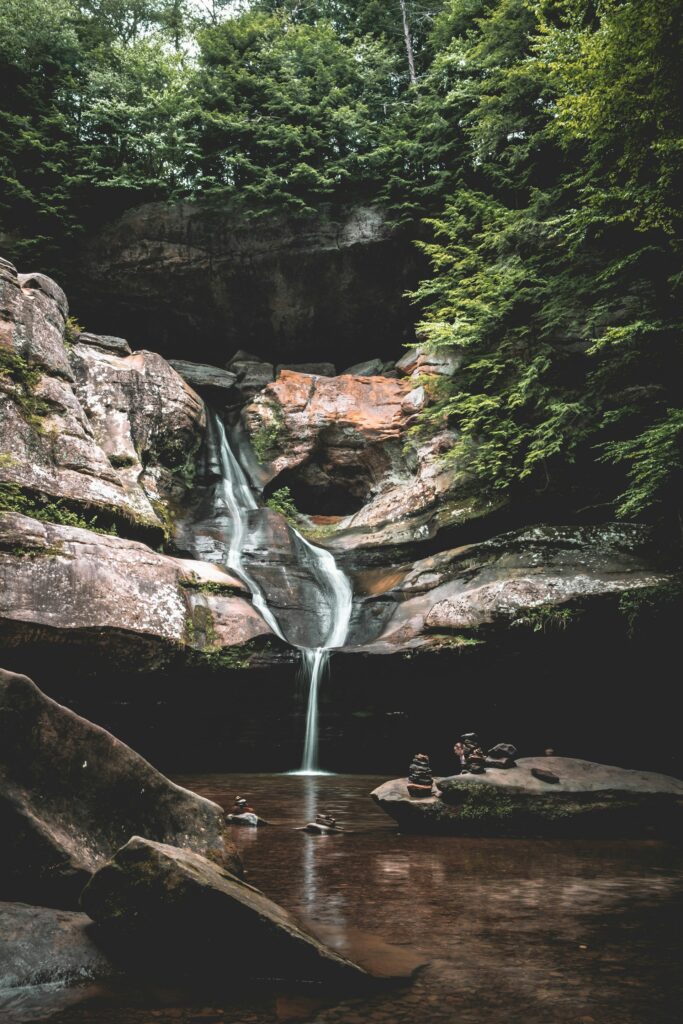
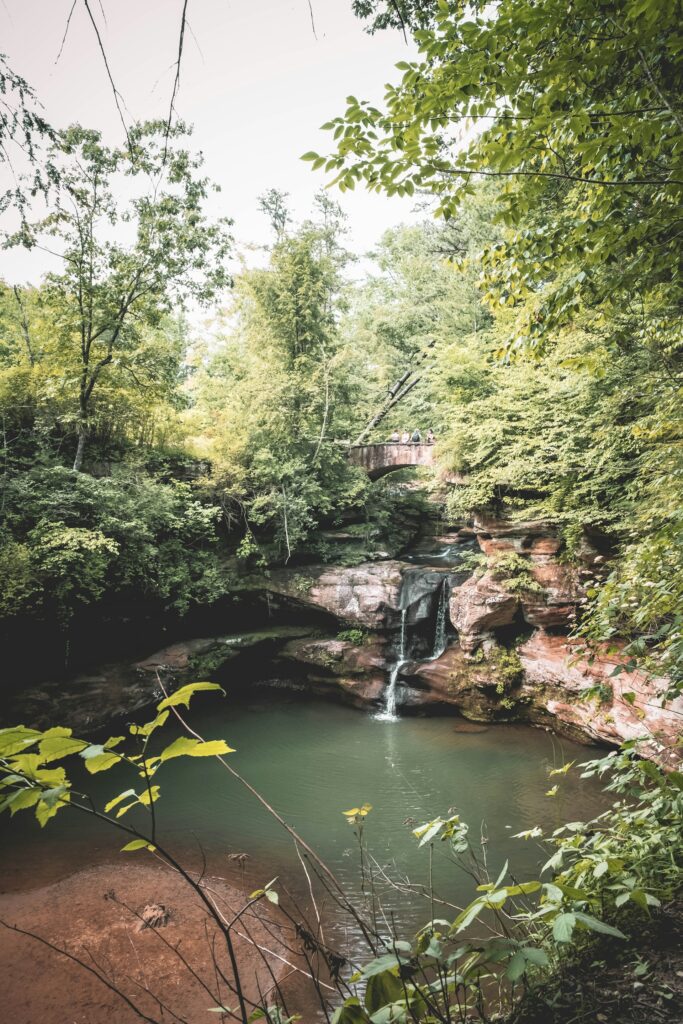
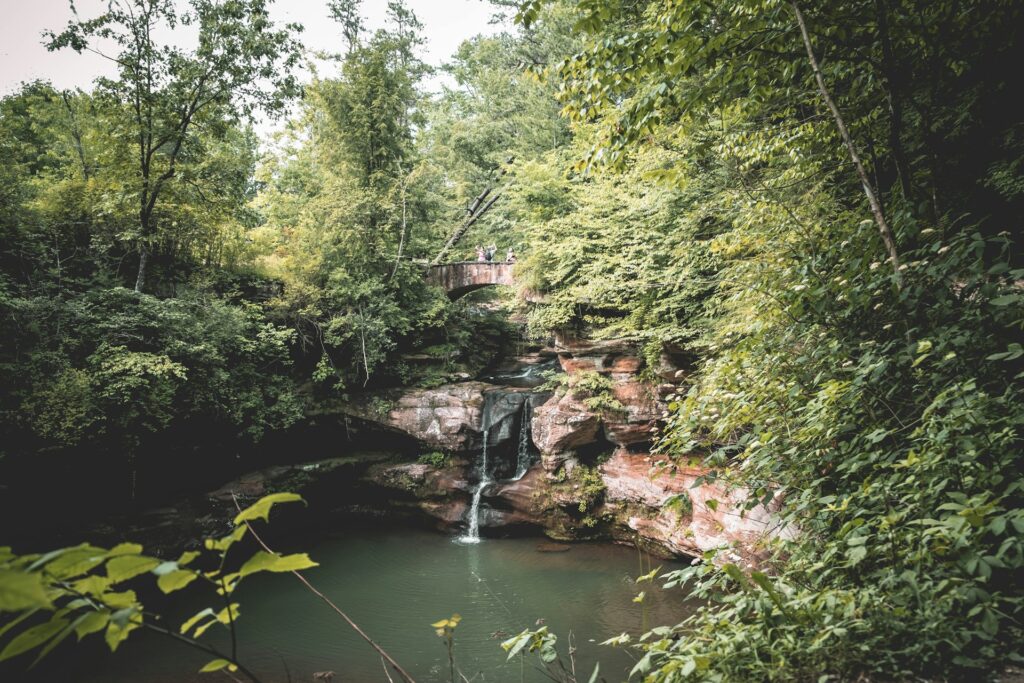
Hocking Hills State Park Campground provides 169 sites with modern facilities, including electric hookups and shower houses. The sites are well-distributed throughout the campground with many offering privacy by backing up to forest areas. The campground serves as an excellent base for exploring six major areas: Old Man’s Cave, Ash Cave, Cedar Falls, Cantwell Cliffs, Rock House, and Conkles Hollow.
Each area features different geological formations carved from Black Hand sandstone. Old Man’s Cave offers the most dramatic gorge walking, whilst Ash Cave features Ohio’s largest recess cave. Most trails are 1-3 miles and well-maintained.
Practical Tips: Spring offers the most impressive waterfalls thanks to snowmelt, whilst autumn provides spectacular foliage displays. Summer weekends can become quite crowded, so consider visiting midweek if possible. Campsites range from $28-35 per night, and reservations are highly recommended from April through October. The nearby town of Logan offers grocery stores and restaurants for resupply and dining out.
Grand Teton National Park, Wyoming: Where Mountains Pierce The Sky Without Warning
The Teton Range doesn’t believe in subtle introductions. Rising abruptly from the valley floor without the courtesy of foothills, these jagged peaks thrust 7,000 feet skyward in one of the most dramatic mountain profiles in North America.
Unlike other ranges that build gradually to their climax, the Tetons announce themselves with geological audacity-a wall of granite spires that seems to scrape the belly of passing clouds. For car campers, this means waking up to mountain views so spectacular they border on the surreal, with pristine lakes reflecting snow-capped peaks that appear close enough to touch yet remain tantalizingly distant.
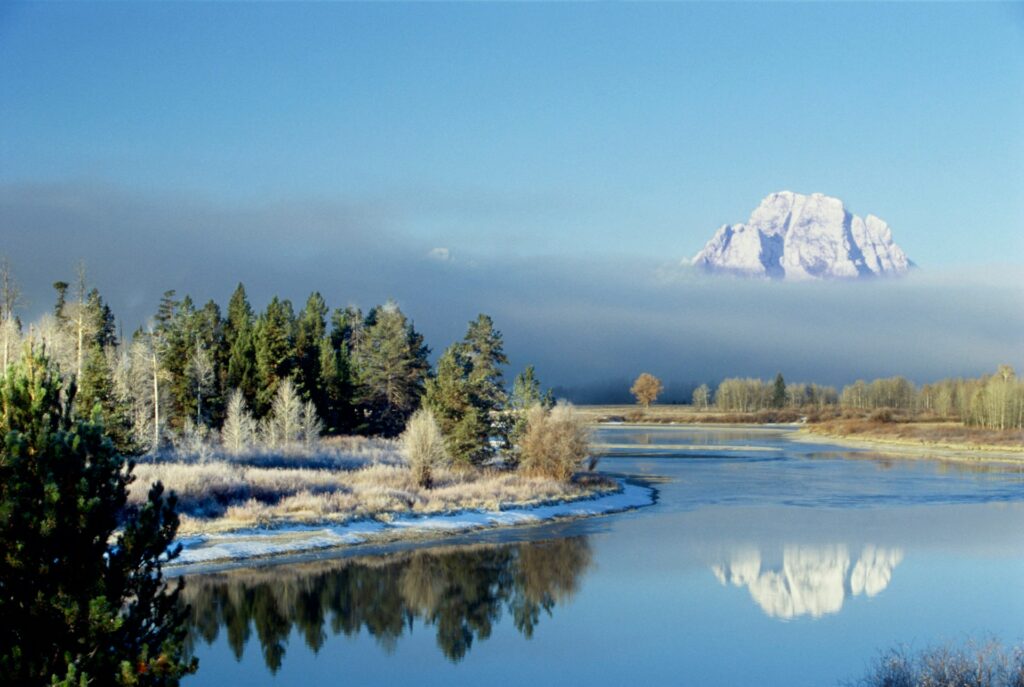
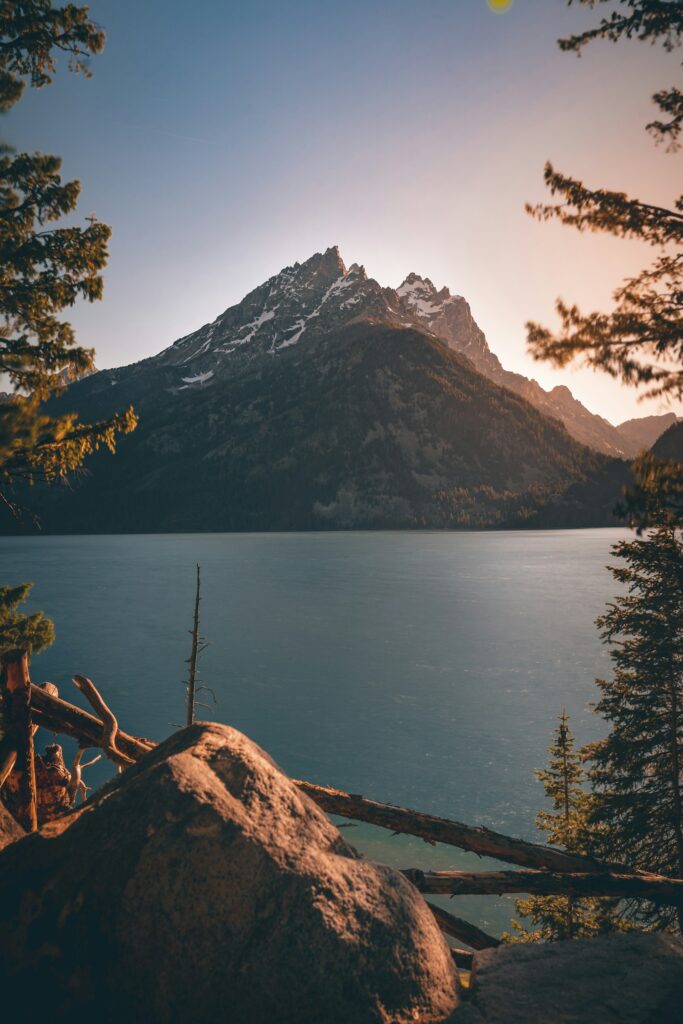

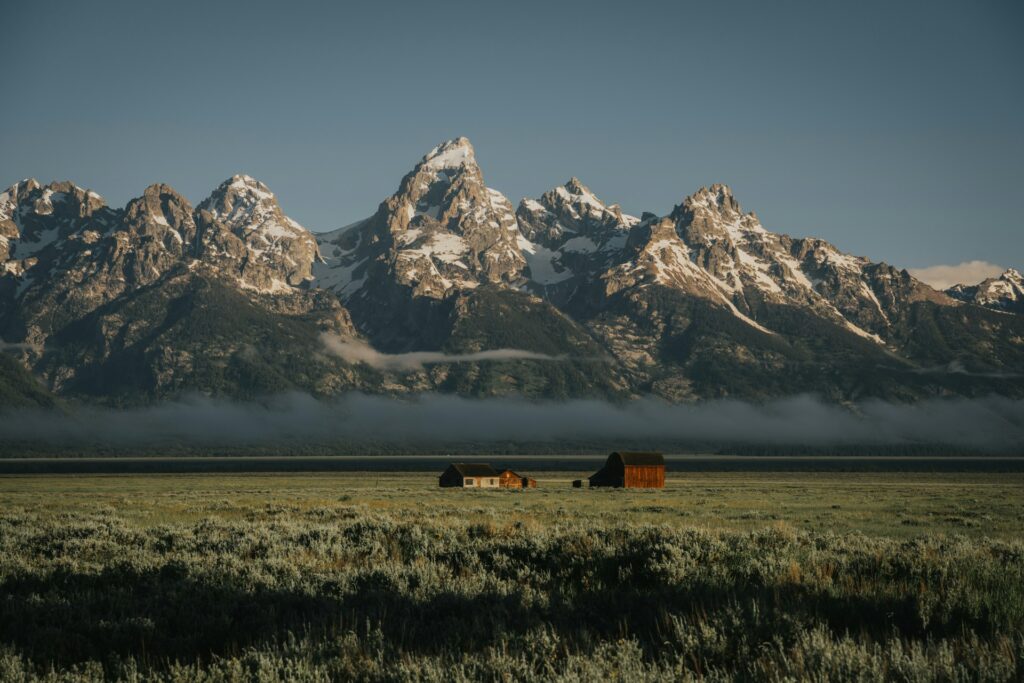
Colter Bay Campground on Jackson Lake offers 350 sites, many with excellent lake and mountain views. The campground includes shower facilities, a visitor centre, and marina. Reservations open January 1 for summer dates and fill quickly.
Signal Mountain Campground offers a more intimate setting with 81 sites along Jackson Lake’s shoreline. Sites 1-30 provide direct lake access, perfect for sunrise photography with mountain reflections.
Practical Tips: The elevation of over 6,800 feet means nights remain cold even during summer, so pack warm sleeping gear regardless of season. Bear canisters or proper food storage containers are required throughout the park.
Wildlife viewing opportunities are abundant, but you must maintain at least 25 yards distance from elk and moose, and 100 yards from bears. The best weather occurs from July through September, though snow remains possible during any month. The park entry fee is $35 per vehicle and covers seven days of access.
Acadia National Park, Maine: Where Granite Mountains Meet The Atlantic
Acadia represents something truly unique in the American national park system-a place where mountains rise directly from the sea, creating a landscape that feels borrowed from the fjords of Scandinavia. This is the only place in America where you can watch sunrise from a mountain peak whilst listening to waves crash against granite cliffs below.
Mount Desert Island packs an extraordinary variety of experiences into its compact 108 square miles: pristine lakes nestled between rounded peaks, carriage roads that wind through forests of spruce and fir, and a rugged coastline where the relentless Atlantic has carved pink granite into otherworldly sculptures. It’s intimacy and grandeur combined, wilderness and refinement existing side by side.
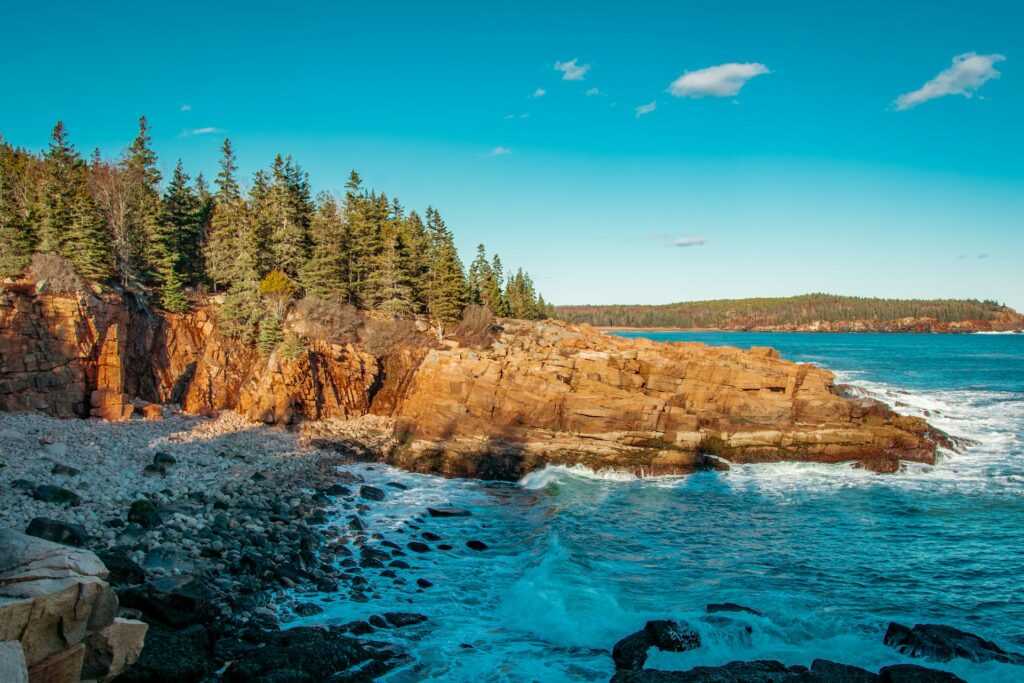
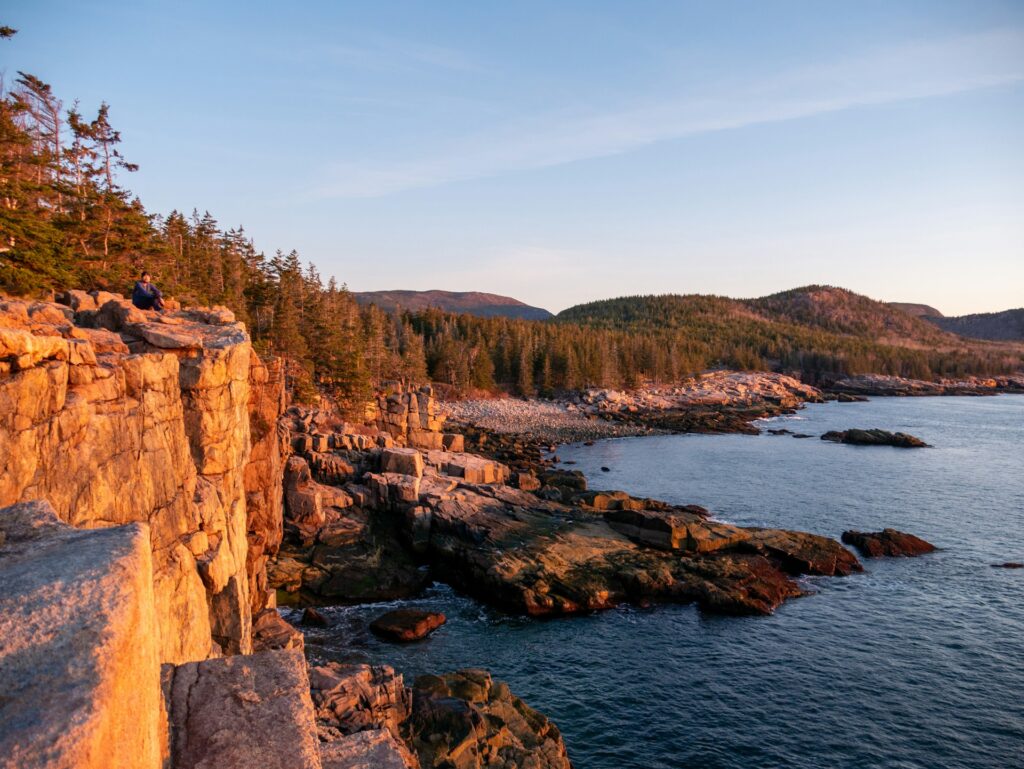
Blackwoods Campground operates year-round with 306 sites nestled in spruce-fir forest, just 5 miles from Bar Harbor. Sites lack hookups but provide picnic tables and fire rings. Reservations required May-October through Recreation.gov.
Seawall Campground on the island’s quieter western side offers 214 sites closer to the ocean. Sites 1-50 are walk-in only, providing more privacy and closer ocean access.
The park’s 27-mile Park Loop Road connects major attractions including Cadillac Mountain (first sunrise viewing spot in the U.S. from October-March), Thunder Hole, and Sand Beach. Historic carriage roads provide 45 miles of car-free exploring.
Practical Tips: Summer temperatures average between 21-27°C, but coastal fog can keep conditions surprisingly cool throughout the day. Peak season runs from July through August, so consider visiting in September for smaller crowds and brilliant autumn colours. Campground fees are $30 per night across both locations. The nearby town of Bar Harbor provides full services including grocery stores and restaurants specialising in fresh lobster and other local seafood.
Choosing Your Car Camping Chariot: The Best Vehicles for Adventure
The right vehicle can make the difference between a comfortable adventure and a cramped nightmare. SCA, who offer auto auctions in Ohio, tell us that, after analysing thousands of successful car camping trips, certain vehicles consistently rise to the top for their combination of space, reliability, and capability.
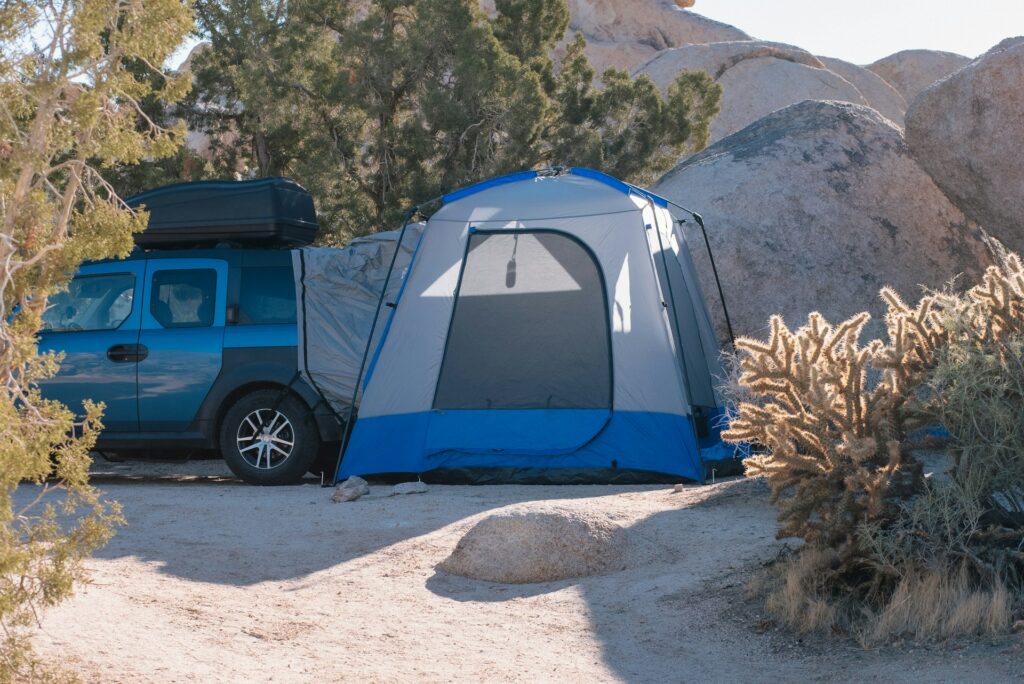
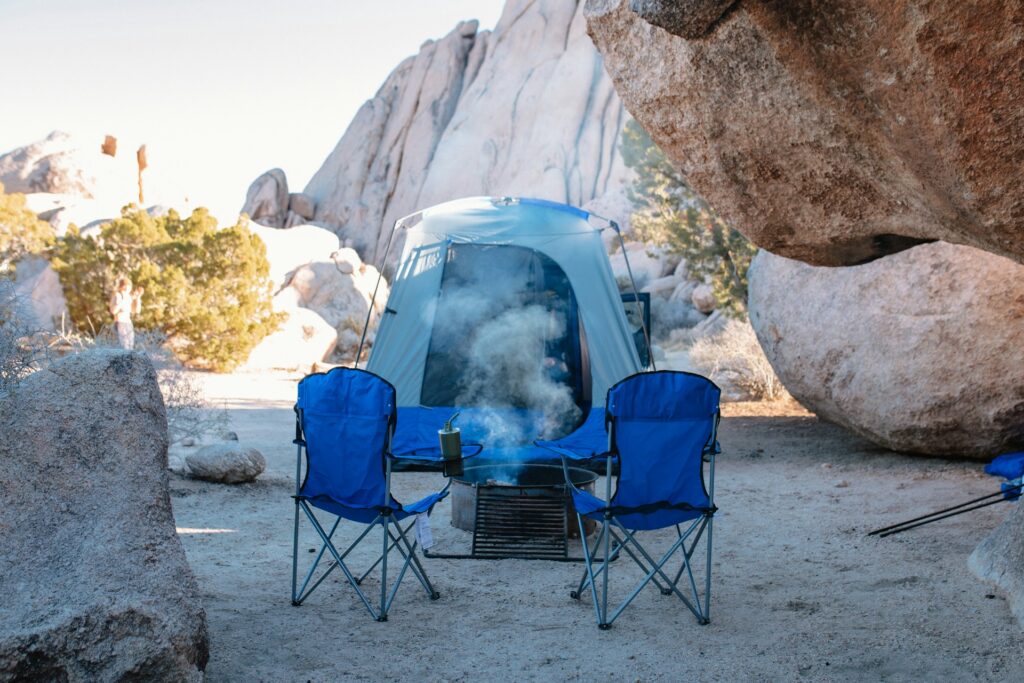
The Versatile All-Rounders
Subaru Outback remains the thinking person’s choice for car camping. Its combination of all-wheel drive, excellent fuel economy (around 30 mpg), and generous cargo space makes it ideal for weekend adventures and daily commuting alike. Fold the rear seats flat, and you’ve got a sleeping area suitable for two adults under 6 feet tall. The higher ground clearance handles forest roads confidently, whilst the efficient boxer engine keeps fuel costs manageable on long road trips.
Toyota 4Runner represents the gold standard for serious off-road camping. Built on a truck chassis, it offers exceptional reliability, genuine 4WD capability, and massive cargo space. The rear seats fold completely flat, creating a spacious sleeping area or room for enormous amounts of gear. Its towing capacity of 6,000 pounds means you can haul trailers, boats, or additional storage. The trade-off is fuel economy-expect around 20 mpg-but the go-anywhere capability more than compensates.
The Luxury Adventurers
Jeep Grand Cherokee strikes an excellent balance between comfort and capability. Modern versions offer refined interiors, advanced 4WD systems, and towing capacity up to 6,200 pounds whilst maintaining respectable fuel economy. The cargo area, whilst not as large as the 4Runner’s, easily accommodates camping gear for two people plus supplies for extended trips.
Land Rover Discovery appeals to those who want luxury with their adventure. Exceptional off-road capability combines with premium interior appointments and clever storage solutions. The third-row seats fold completely flat, creating a massive cargo area. However, reliability concerns and higher maintenance costs make this a choice for those prioritising comfort over pragmatism.

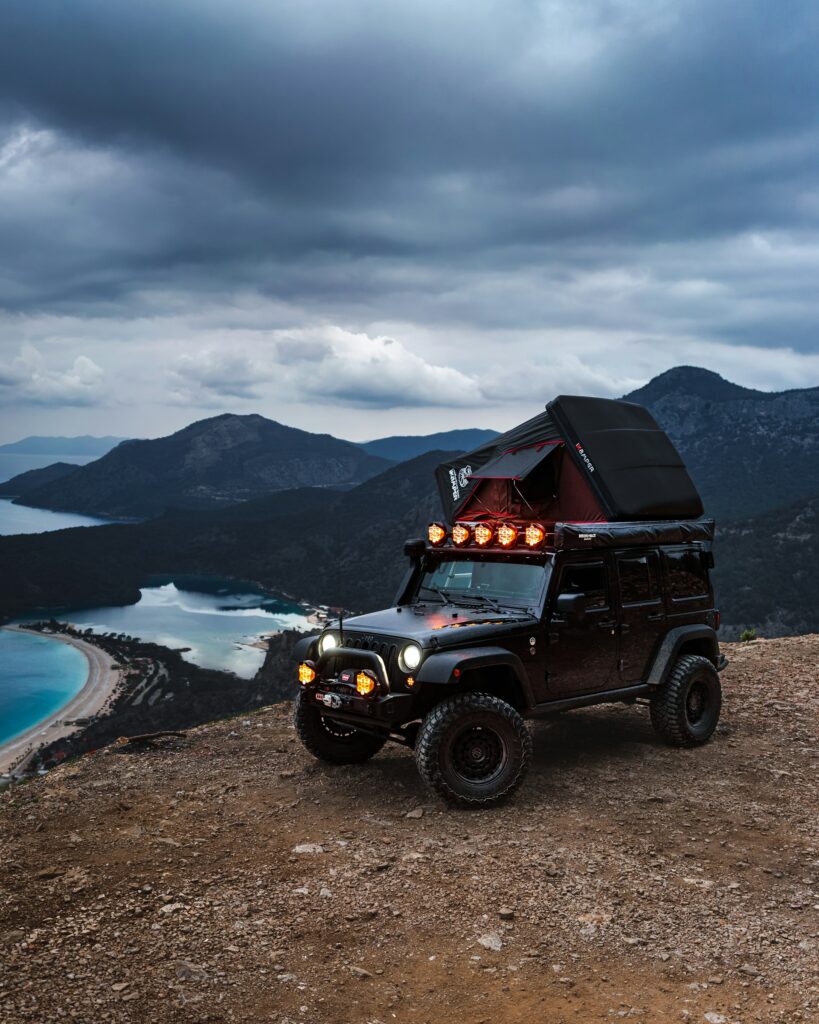
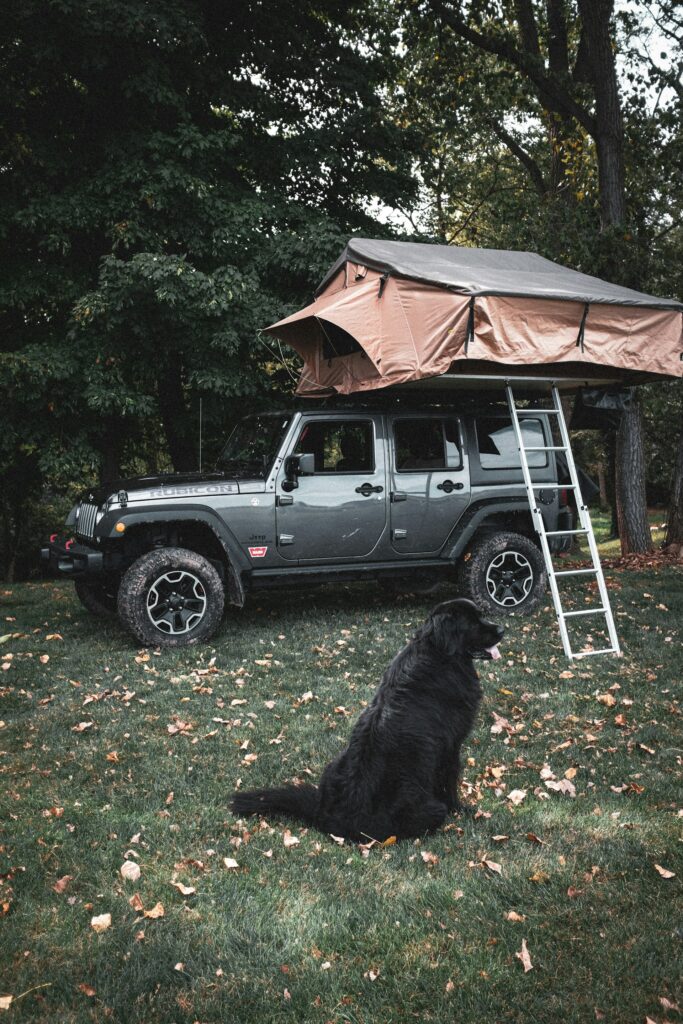
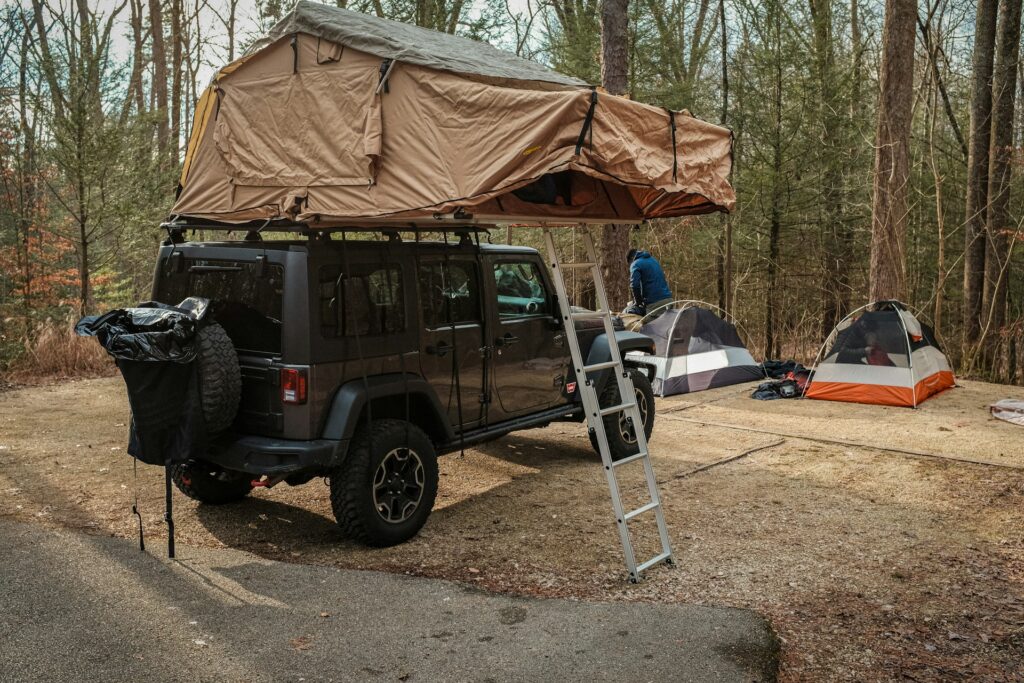
The Space Maximisers
Honda Pilot and Toyota Highlander offer three-row flexibility with the ability to fold all rear seats flat, creating enormous cargo areas perfect for car camping. Both provide excellent reliability, reasonable fuel economy, and enough space for families or groups. The trade-off is reduced ground clearance compared to truck-based SUVs.
Key Features To Prioritise
Cargo Space: Look for vehicles with flat-folding rear seats. Measure the sleeping area when seats are down-you’ll need at least 6 feet length for comfortable sleeping.
Ground Clearance: Minimum 8 inches for forest roads; 9+ inches for serious off-roading. Many car camping spots require navigating rough tracks.
Fuel Economy: Consider your typical trip distances. Better fuel economy means longer range between petrol stations and lower overall costs.
Reliability: Choose brands with proven track records. Breaking down in remote areas turns adventure into ordeal quickly.
Storage Solutions: Built-in tie-down points, roof rails, and clever interior storage make organisation much easier.

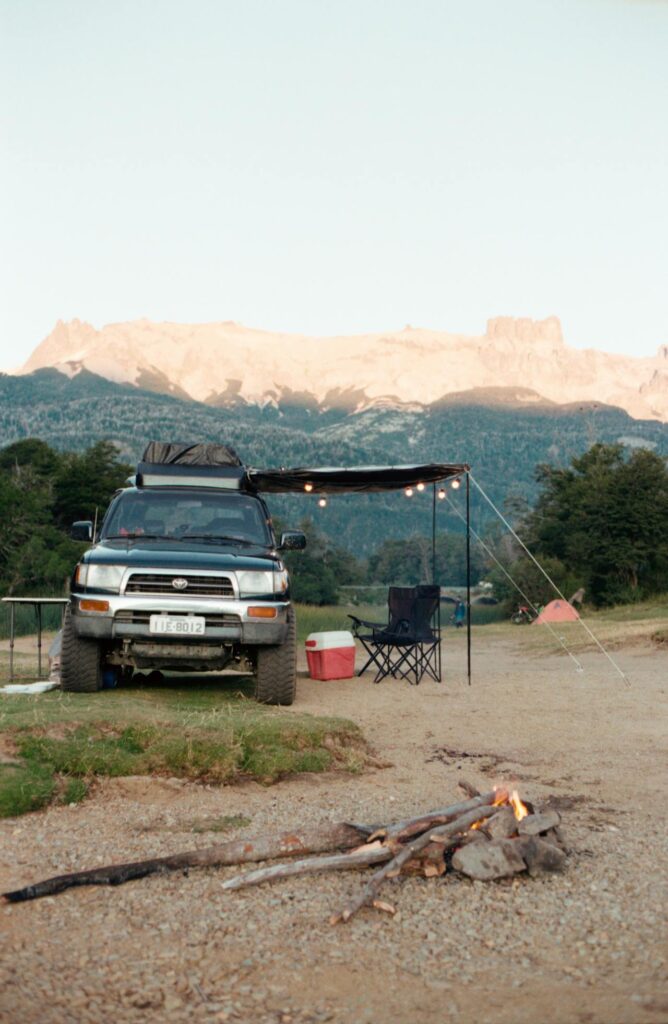
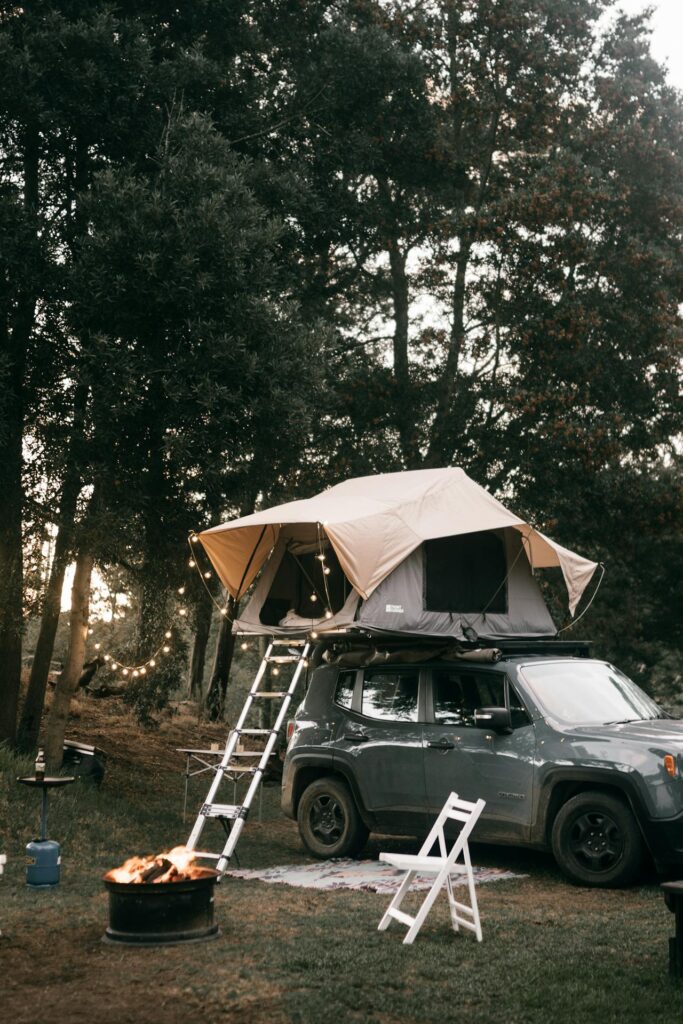
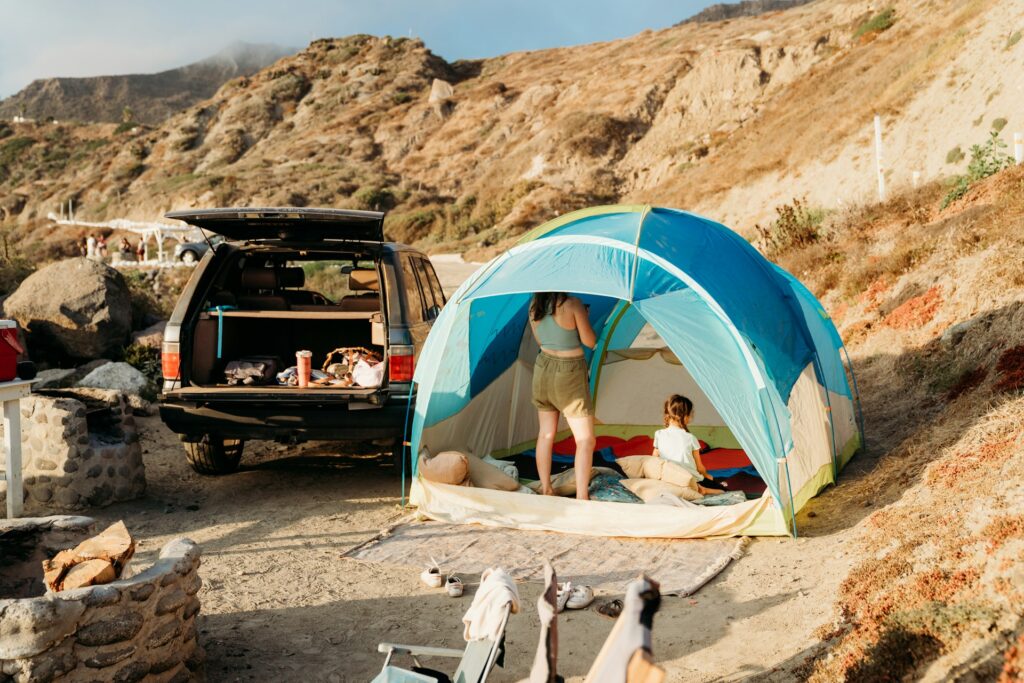
Essential Modifications
Regardless of your vehicle choice, several modifications dramatically improve the car camping experience:
- Window coverings for privacy and temperature control
- Roof rails or roof box for additional storage
- 12V cooler powered by your vehicle’s electrical system
- Portable battery pack for charging devices without draining your car battery
- LED lighting strips for interior illumination
- Memory foam mattress cut to fit your cargo area
The Bottom Line
Each destination offers unique advantages: Olympic for ecosystem diversity, Sedona for desert beauty and free camping options, Hocking Hills for Midwest convenience and waterfalls, Grand Teton for mountain drama and wildlife, and Acadia for coastal-mountain combination.
Consider your vehicle’s capabilities when choosing sites-some forest roads require high clearance, whilst developed campgrounds accommodate any car. Always check weather conditions, make reservations where required, and pack appropriate gear for elevation and season. Most importantly, research each area’s specific regulations, from food storage requirements in bear country to fire restrictions during dry seasons.
And if you’re seeking a similar wild camping experience, then check out our guide on the best places in the UK for families to camp for free. We’ll see you in a field somewhere!




